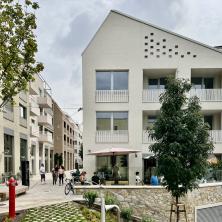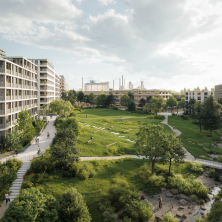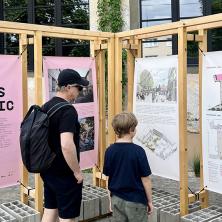OneDay Vauxhall Public Realm Strategy, London, UK
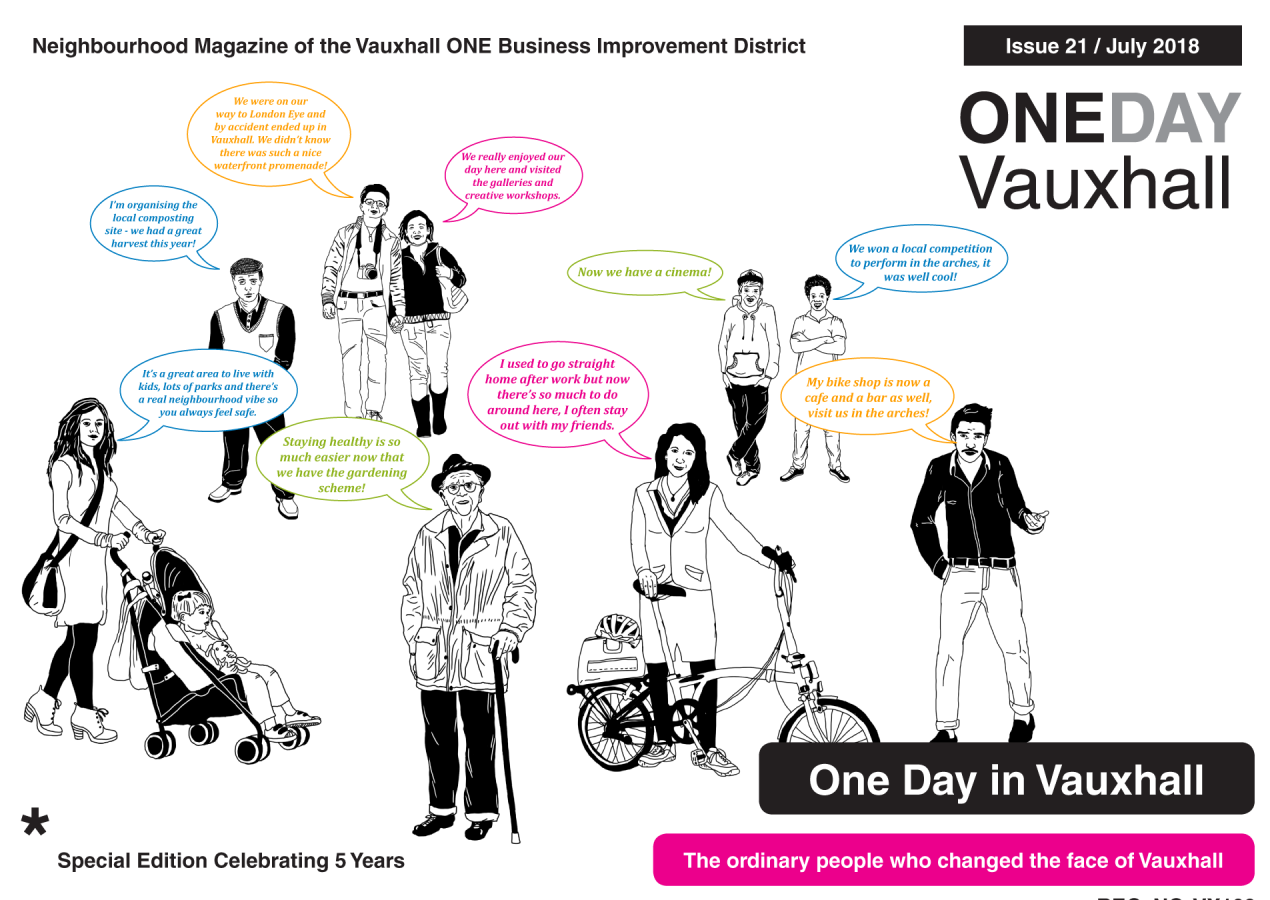
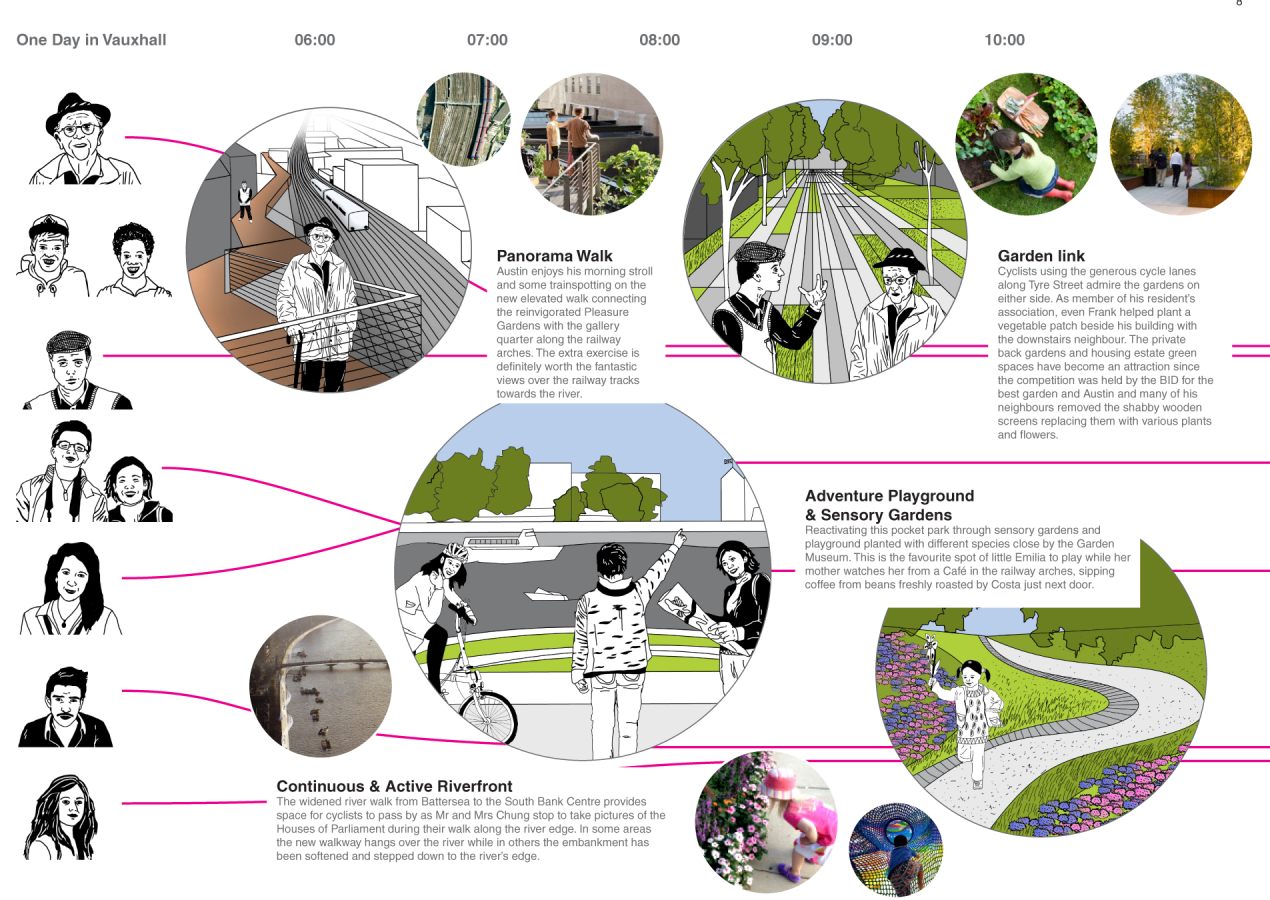
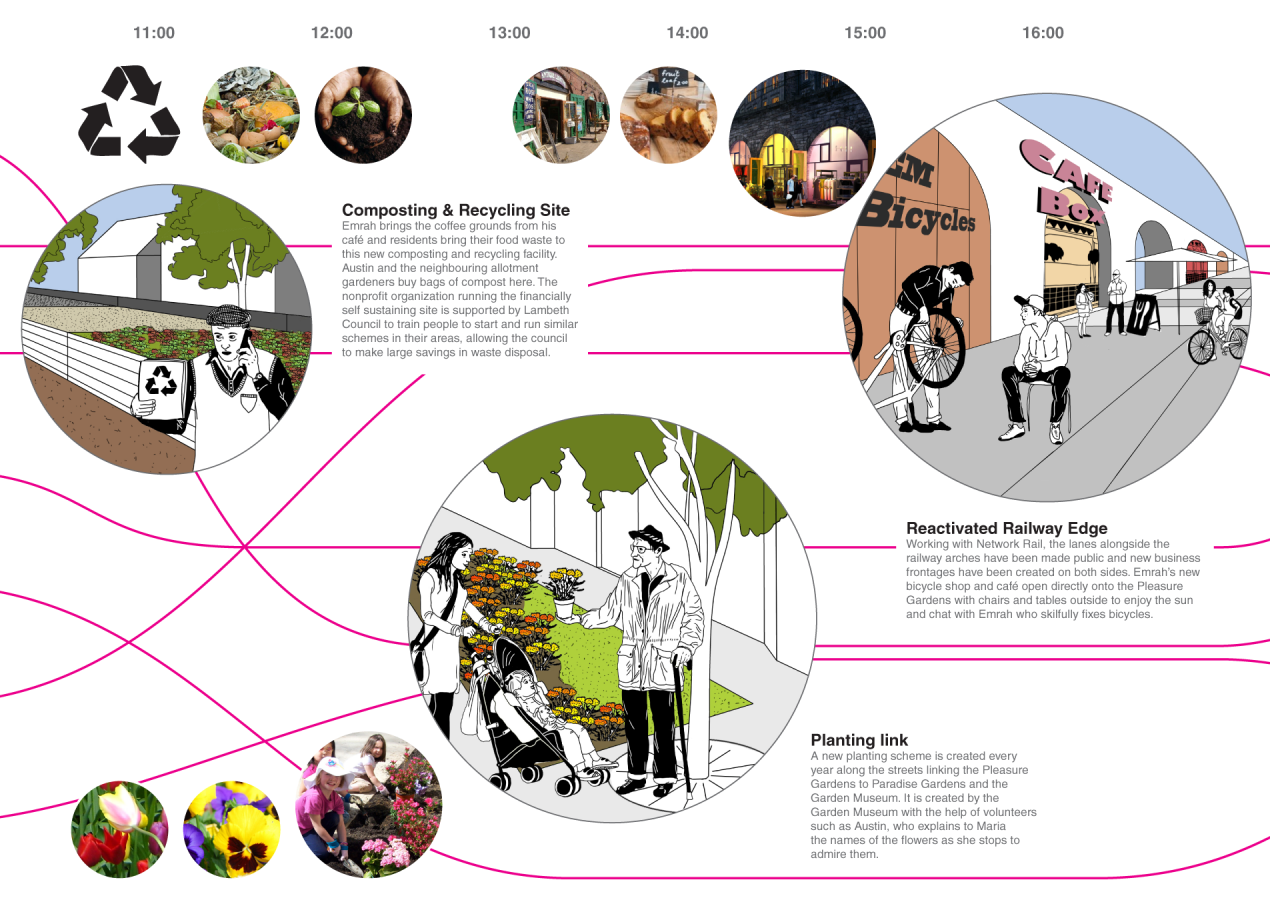
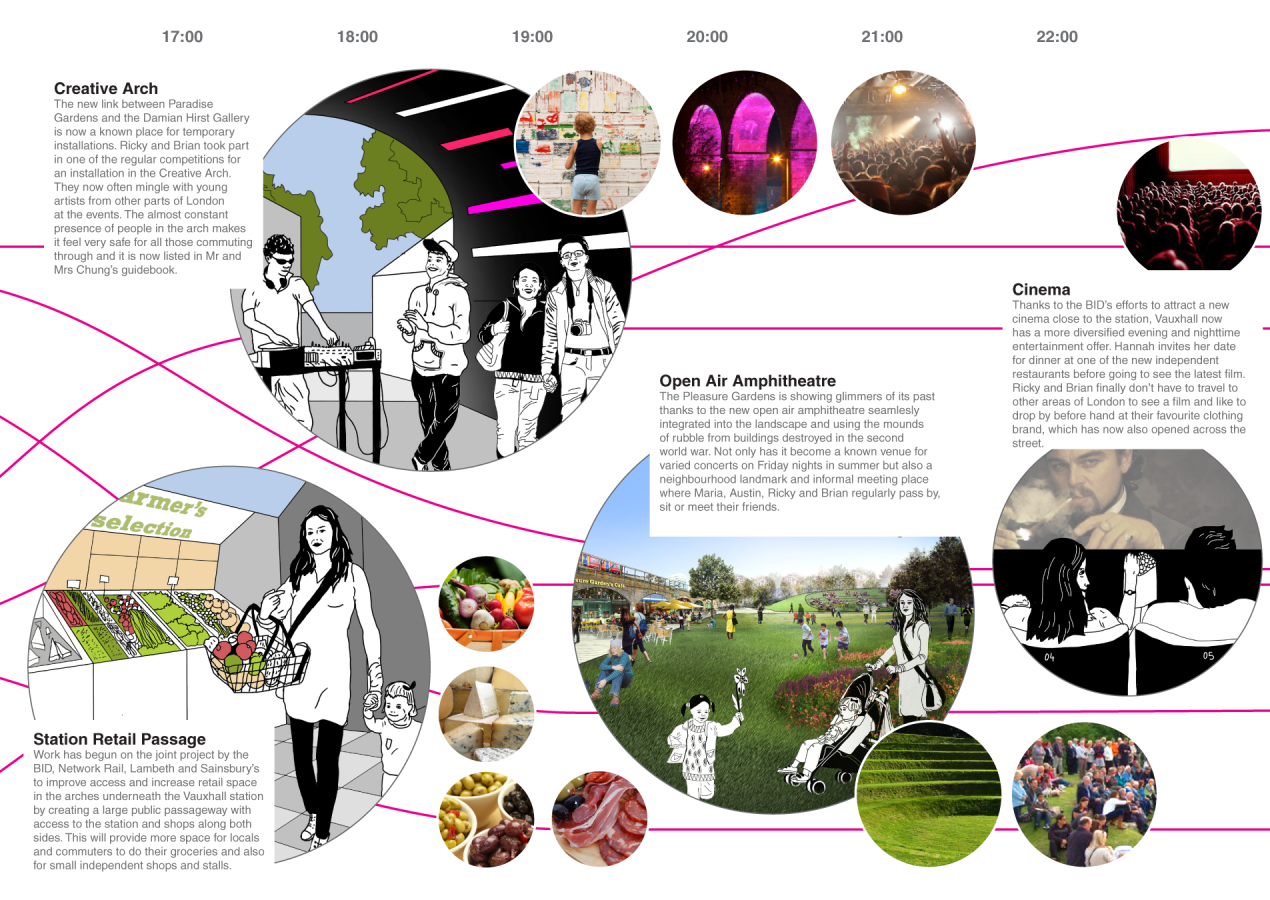
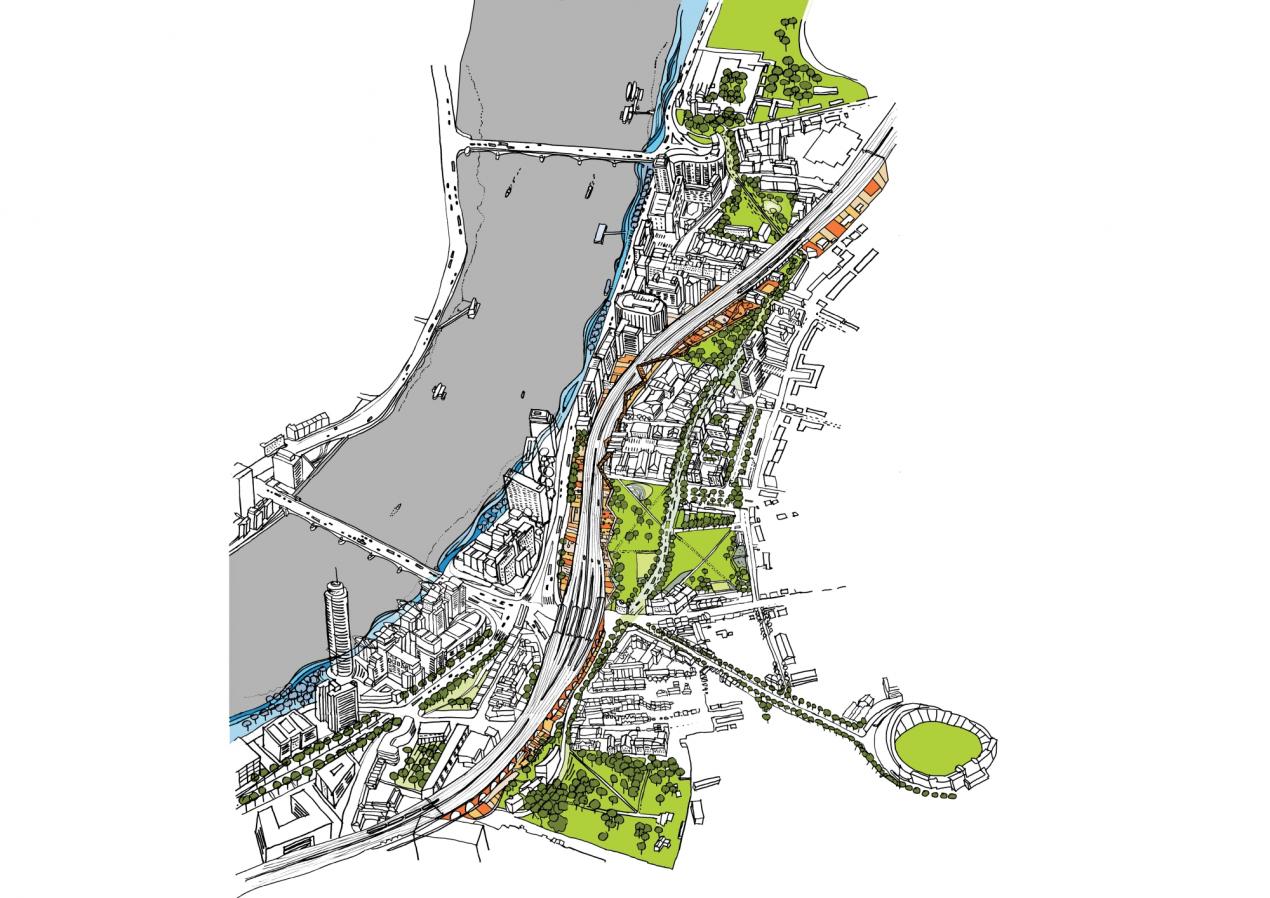
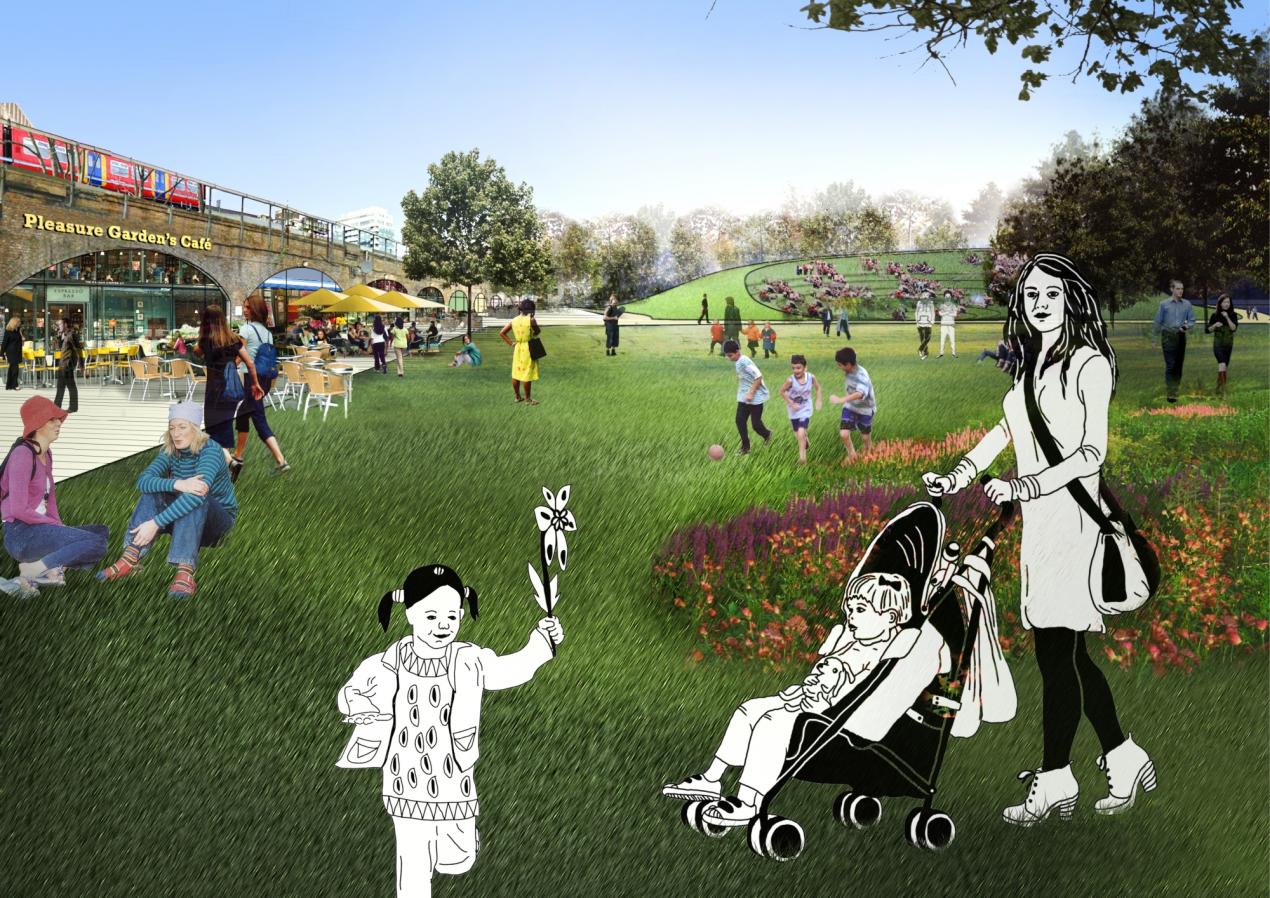
Highly Commended RIBA International Competition 2013
The Vauxhall Missing Link
Client: ONE Vauxhall / RIBA
Team: Marko&Placemakers
The story of our proposal takes form of a fictional dialogue in the future, looking at what has been achieved through the strategic vision and framework proposed by us in the competition.
What initially interested you in Vauxhall?
When we heard about the urban design competition for Vauxhall in 2013 we became fascinated with the rich cultural and business history of the area. The original Pleasure Gardens made art and performance accessible to the masses for the first time, for a small charge. Combining creativity and sustainable business models such as this was important in developing the ONEday Vauxhall framework. The layers of cemeteries and building rubble upon which the area is built emphasised the importance of recognising and building on the past and present of the area, not just replacing it, to create a distinct character.
What was the original vision for the ONEday Vauxhall concept?
The high line project in New York inspired the Vauxhall BID to hold an urban design competition. Two factors of its success stood out for us: firstly, the vision of a few locals to see the value in nature’s reclamation of a rundown railway bridge; and secondly that they didn’t give up, they gathered support and involved talented designers to bring out the existing character of the place. Our concept for Vauxhall built upon this and focused on revealing and developing the character of the neighbourhood to create sustainable change rather than just temporarily rebranding the area at great financial expense and no guaranteed long-term improvements. This meant setting up a framework which supports the involvement of varied individuals and groups in urban interventions to make sure that change in the intangible social fabric kept up with the more tangible transformations to the physical urban fabric. As with the high line, the potential of the design is created by linking the social and physical fabrics.
What are the main elements of the framework?
The ONEday Vauxhall urban design framework focuses on how to link the social and physical fabric. The physcial fabric is made up of two layers, the existing urban fabric and a new layer of strands to reinforce its main character assets: improving the river walk, making the railway arches into an active spine and creating a green link between the many existing green spaces. These strands guide the detailed implementation of the GLA and Lambeth strategies.
The social fabric consists of the layer of narratives of people’s lives, their networks of needs, wants and activities and a virtual layer which reinforces these networks with an Internet forum and social media. These layers of social fabric are necessary to refine the larger area strategies, implement them and increase their chances of success.
In the framework nodes bind together the social and physical fabrics. Nodes are actions or activities undertaken or facilitated by the Vauxhall BID. They combine various physical and social elements and can be permanent or temporary, visible or hidden, everyday or a special occasion, a building or plants, experimental or standard. Nodes can tackle practical issues at the local level, such as recycling and composting. Their role is to focus mutual interests and desires through real urban interventions, which reinforce the strands in the physical fabric.
Why was it important to get diverse group of individuals, organisations, and businesses involved?
The first five years of ONEday Vauxhall have shown that it is paramount for a BID to provide a clear framework to involve all the stakeholders of the area, especially the residents to make visions and strategies reality. The BID alone does not have the finances or power to undertake the envisioned transformations in Vauxhall, it must create networks to identify overlaps with the means and goals of others organisations.
In particular, the involvement of the local resident groups has been instrumental in gaining support from Lambeth, the GLA and other private and public organisations for specific projects. The involvement of residents, businesses and institutions has also meant a strengthened community character and spirit. Without this intangible neighbourhood spirit, any amount of investment in green links and active frontages would have been wasted. It is the character of the community and neighbourhood which today attracts other people and businesses, not the benches or street trees.
What are the future plans for the scheme?
Thanks to the nodes and their social media forums, the framework is starting to take a life of its own, fostering collaboration and economic opportunities in the area, allowing businesses to prosper, without alienating the local residents. Vauxhall is becoming a destination, not just a link in the city. We hope that that this will become a model for other London neighbourhoods.

